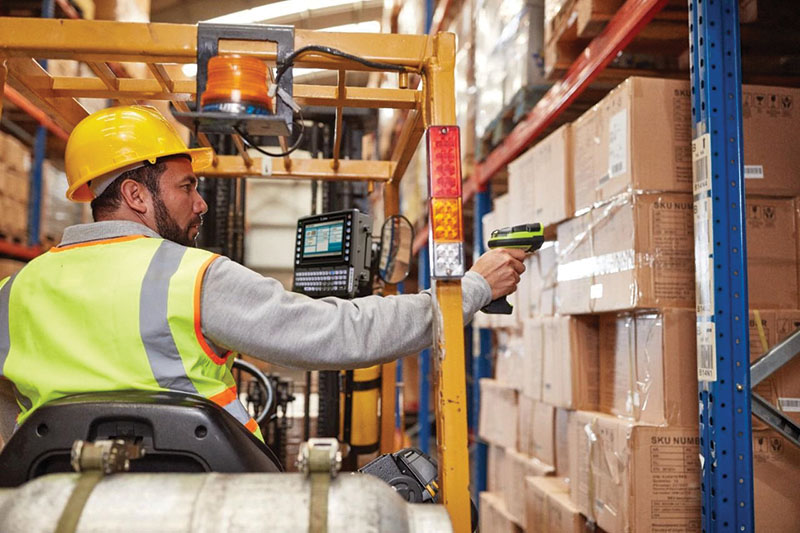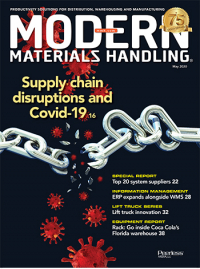A system of reality for the new normal
Visibility is essential for control, especially when disruption threatens to leave operations powerless.
Supply chain professionals are probably dealing with far more change than they were prepared for. If it’s true you can’t manage what you don’t measure, the places in need of a ruler are becoming abundantly clear.
“If you have invested in visibility technology like RFID, active locationing or other technology with real-time visibility, you can make the best out of a bad situation,” says Mark Wheeler, director of supply chain solutions at Zebra Technologies. “You know where your assets are, and if, for example, a manufacturer can’t make product A and has to quickly shift to B, you have all the info you need to do that.”
Wheeler says the best way to deal with unpredictability is with visibility and flexibility, using technology that can adapt—and maybe provides more visibility than is needed from day to day. This will support quick adjustments.
“For supply chain executives, one of the mega-trends is ‘systems of reality’ as opposed to systems of record,” Wheeler says. “A warehouse management system (WMS) gets visibility when somebody scans, which requires a discrete action and proactive activity. Who knows when it will happen, if it will happen, or if it’s done properly?”
The bulk of users are still in a bar code-driven world, he adds, and are using rugged, extended-range scanners up to 70 feet, whether handheld or tethered to a lift truck. There’s some growth in RFID, such as area readers for tracking inventory at the pallet and case level, especially at docks where they can cover a large area automatically to start building a “system of reality.”
The location of goods and equipment is an essential starting point for task assignment. A system of reality can help enforce rules such as, for example, staying six feet apart. Wheeler notes growing customer interest in technology that can help them deal with new operational requirements around social distancing.
On the software side, most of the market is still using telnet or terminal emulation (TE), Wheeler says, but that’s changing. At the operating system level, there’s movement toward Android, which he says offers a much more intuitive user experience. Once transitioned to Android, companies have plenty of options to improve user experience.
“They’re focused on rapid onboarding, which is a major and almost hidden cost,” Wheeler says. “If you can significantly reduce your four-week average training time, those are hard dollars to the bottom line.”
Any edge technology will provide location data, which can then be used for real-time alerts or after-the-fact analytics. Wheeler says customers often like to “replay” the day to look for congestion or wasted motion.
“These tools are out there and available, and tend to be adopted for rolling stock, pallet jacks, lift trucks and places where there’s not necessarily a lot of good data for optimizing usage, much less real-time path optimization,” Wheeler says. “There are process improvement opportunities right out of the box. The idea is going from the glimpses of reality you had in the past to the constant reality these new systems can deliver.

Article Topics
Lift Truck Tips News & Resources
Overlooked no more: The importance of lift truck inspections Lithium transition: It’s all about the outcomes Safety for automatic guided vehicle (AGV) environments Assessing the move to lithium Leasing’s fleet management upside Managing for lift truck operator safety Narrow aisle success: Think systems, then trucks More Lift Truck TipsLatest in Materials Handling
Registration open for Pack Expo International 2024 Walmart chooses Swisslog AS/RS and software for third milk processing facility NetLogistik partners with Vuzix subsidiary Moviynt to offer mobility solutions for warehouses Materials Handling Robotics: The new world of heterogeneous robotic integration BSLBATT is looking for new distributors and resellers worldwide Lucas Watson appointed CSO for Körber’s Parcel Logistics business in North America Hyster recognizes Dealers of Distinction for 2023 More Materials HandlingAbout the Author
Subscribe to Materials Handling Magazine

Find out what the world's most innovative companies are doing to improve productivity in their plants and distribution centers.
Start your FREE subscription today.
April 2024 Modern Materials Handling

Latest Resources












